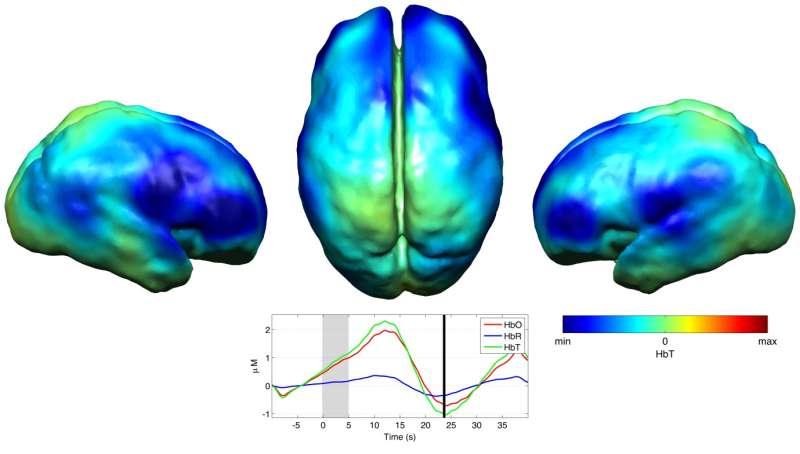Infrared imaging technologies offer reduced costs, improved quality of life

The latest advances in near-infrared spectroscopy (NIRS) technologies are enabling development of new capabilities in diagnosis and treatment of disease, offering reduced health-care costs, portability, increased sensitivity, higher patient comfort, and better quality of life. Parallel special sections on Clinical Near Infrared Spectroscopy and Imaging published by SPIE, the international society for optics and photonics, in Neurophotonics and the Journal of Biomedical Optics detail the latest work.
Enormous progress has been made since an earlier special section on Near-Infrared Spectroscopy and Imaging of Tissues was published 20 years ago in the Journal of Biomedical Optics. The new special sections highlight achievements in NIRS technologies applied in challenging clinical environments to investigate increasingly complex illnesses and dysfunctions.
Guest editors are Marco Ferrari (Università degli Studi dell'Aquila), Joseph Culver (Washington University School of Medicine), Yoko Hoshi (Hamamatsu University School of Medicine), and Heidrun Wabnitz (Physikalisch-Technische Bundesanstalt).
Together, the joint sections substantiate the immense progress toward making NIRS an important tool in the everyday clinical routine, the editors said.
In the Journal of Biomedical Optics, the special section covers a wide range of topics, such as measuring oxygen saturation in muscles and visceral organs, assessing wounds and adipose tissue, and characterizing breast tumors.
An example is an article on time-domain diffuse optics technologies with potential for applications in noninvasive evaluation of probing hypodermal human tissues ("New frontiers in time-domain diffuse optics", Antonio Pifferi, et al.)
The Neurophotonics special section focuses on applications in the brain, with topics including brain-function assessment of preterm infants, characterization of stroke and traumatic brain injury, diagnostics in autism and epilepsy, neuro-rehabilitation, and treatment of depression.
As one example of how researchers are pushing the limits of optical technologies in challenging clinical environments, the guest editors noted an article in Neurophotonics by Maria Chalia and colleagues from neoLAB, a joint-venture between University College London and the Rosie Hospital.
In "Hemodynamic response to burst-suppressed and discontinuous electroencephalography activity in infants with hypoxic ischemic encephalopathy (HIE)," the authors demonstrate how diffuse optical tomography can be used to discover previously unobserved features of infant brain injury.
HIE, one of the most common forms of newborn brain injury, occurs when a baby is temporarily deprived of oxygen at birth, usually because of a difficult delivery. HIE often leaves the baby with severe disabilities.
By term age, a healthy baby's brain exhibits constant electrical activity. This can be observed with electroencephalography (EEG), a common clinical neuromonitoring technique.
In contrast, babies with HIE often exhibit periods of almost no brain activity, punctuated by periods of hyperactivity. This state is known as burst-suppression. Despite being a relatively common phenomenon, surprisingly little is known about the state or what effect it has on brain development. This is, in part, because studying and imaging the brain of such vulnerable infants is a huge challenge.
Chalia et al. combine EEG with diffuse optical tomography, which uses near-infrared light to produce images of changes in oxygenation in the brain. In applying this approach to study burst-suppression in the infant for the first time, the authors demonstrate that these periods of electrical hyperactivity are associated with dramatic swings in brain oxygenation.
Intriguingly, these changes in oxygenation showed significant spatial variation across the brain, suggesting that burst-suppression does not involve the whole cortex but instead is isolated to specific regions. This discovery was possible only because of the superior spatial specificity that diffuse optical tomography provides compared to the standard clinical approach of EEG.
The authors conclude that combined diffuse optical tomography and EEG approaches are likely to be critical to future investigations of abnormal brain states and the impact of those states on brain development.
More information: Maria Chalia et al, Hemodynamic response to burst-suppressed and discontinuous electroencephalography activity in infants with hypoxic ischemic encephalopathy, Neurophotonics (2016). DOI: 10.1117/1.NPh.3.3.031408



















